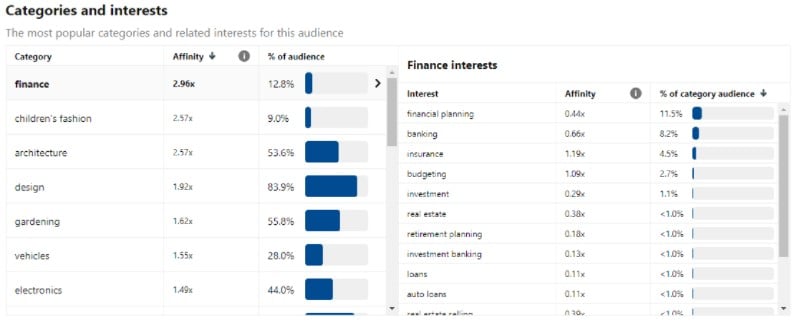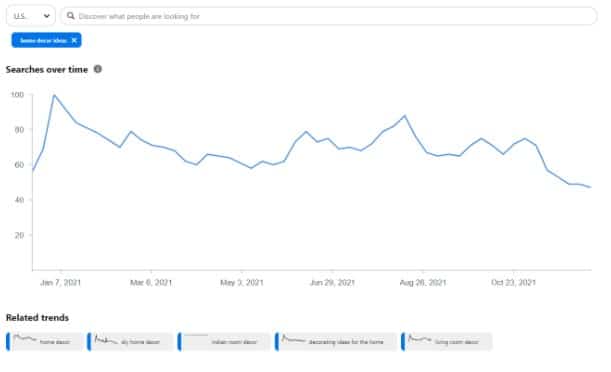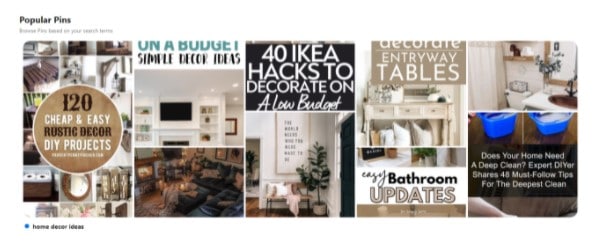A self-described “visual discovery engine”, Pinterest helps 400 million monthly users find, save, and share ideas for an array of consumer interests. eCommerce retailers of any size have new and growing opportunities in 2022 to reach and convert customers on Pinterest using targeted content and unobtrusive ads. Pinterest users can discover new products they’ll love, while eCommerce brands harness users’ intent to grow their businesses.
Pinterest users plan for the future and offer key intent signals through saving, organizing, and sharing ideas. Common verticals on Pinterest include beauty, fashion, financial services, food and beverage, home goods, and more. These intent insights offer key opportunities to reach leads and influence consumer purchasing behavior while increasing brand awareness and engagement.
Pinterest is growing its eCommerce capabilities.
Pinterest buyers are forecasted to reach 15.1 million in 2022 as Pinterest integrates with Shopify to streamline retailers’ use of Pinterest tags and merchandise uploads. Nina Goetzen, eMarketer analyst at Insider Intelligence said, “Enticing creators to make more brand-sponsored content and directly link to products via its tagging feature could help Pinterest capture a greater share of the growing social commerce market in the US.”

The pros of Pinterest “Pins”
As users actively search Pinterest for inspiration to start a new project, they’re also hunting for the products and services to achieve it. This makes a Pinterest “pin”, a saved piece of content on Pinterest, a powerful asset for marketers as it has a much longer lifespan than a post on other social platforms. Pins continue to show up on users’ feeds months after initially posted. If the content is engaging and valuable, it can be pinned again and again to different users’ boards, continuing to drive reach and conversions.
With Pinterest, the ads are additive and show up on users’ feeds and searches in the same format as a regular pin, creating a seamless experience while putting content right in front of them.
This results in a 2.3x more efficient cost per conversion than ads on social media and a 2x higher return on ad spend for retail brands, compared to social media.
How to Advertise on Pinterest
Pinterest offers four campaign objectives: awareness, consideration, conversions, and offline sales. Ad formats include standard, video, shopping, carousel, and collections with an option to promote organic pins. Advertisers can utilize the platform’s automatic bidding tools or manually set bids with targeting capabilities of automated targeting, demographics, interests, keywords, customer lists, and act-alike audiences. Measurement reports and advanced analytics are available including a tool called Audience Insights. Advertisers can learn more from Pinterest Ads Manager.
1. Optimize with the Audience Insights tool.
Discover further audience intent and insights with key user demographics, interests, and behaviors. Audience Insights also offers information on the most popular Pinterest categories and related audience interests, including an affinity metric comparing audience interest in a particular topic to the rest of the Pinterest audience.
Here’s an example of the Audience Insights dashboard from a furniture and home goods brand.

In the above example, the audience has a particular affinity (2.96x) to the finance category compared to the rest of the Pinterest audience. The second highest affinity was for children’s fashion (2.57x) which our team utilized to advertise items that this brand currently sells for children, such as nursery furniture, décor, and rugs. The data from Audience Insights was extremely helpful in providing us with the necessary audience details to inform our decisions for campaign and ad optimizations.
By utilizing the insights gathered from this tool and including children’s furniture and décor ads in our campaigns, the brand saw a 125% increase in purchases month over month.
2. Identify intent through user behavior.
Pinterest “pinners” are planners. Pinterest is able to identify what users will be interested in next. For example, 8 out of 10 predictions in its Pinterest Predicts report for 2021 came true. Users are searching for inspiration for seasonal or life moments. By planning campaign timelines and assigning budgets accordingly, advertisers can make the most of user behavior signals. When using the consideration objective, automatic budgeting from Pinterest’s advertising solutions can help drive more efficient results across ad groups.
3. Create brand content that inspires.
Pinterest users are hungry for new ideas through “inspiration with an intention”. Quality branded content doesn’t interrupt their user experience. It inspires it by allowing them to discover new products for their plan. With 97% of top Pinterest searches being unbranded but 80% of weekly users discovering a new brand or product on the platform, brands have the power to influence and share how they are the right choice for the customer’s project. Having the right brand or product ad when this search for inspiration occurs will increase discoverability and brand awareness and recognition.
4. Inform campaign decision-making with Pinterest Trends.
The Pinterest Trends tool shares a “historic view of the top search terms and topics in the US, UK, and Canada within the past 12 months.” While general, Pinterest Trends shows what content is popular among Pinterest’s 400 million monthly users. Use this tool when researching for campaign keywords, similarly to Keyword Planner in Google Ads. Beyond searches over time, Pinterest Trends also offers related trends, or keywords, and popular “pins” around that keyword which can be used to conceptualize ad creative.


5. Stay tuned to Pinterest TV.
Launched in October 2021, Pinterest TV offers live, original, and most importantly shoppable creator shows. Pinterest TV takes inspiration one step further by giving users the chance to connect and interact with creators while learning about creators’ favorite products. This unique opportunity helps users find fresh ideas from their favorite influencers and shop exclusive deals. For advertisers, creators showcase and tag products for users to shop and purchase on retailers’ sites. Live shopping experiences can be enabled through hosts with a shopping toolbox that includes a product drawer with prices and product details, product drops, brand collaborations, discount modules, and more. As Pinterest moves further into the creator economy, video is meant to become the core of its platform.
Whether your eCommerce brand is big or small, prioritizing Pinterest advertising offers benefits to your business. By harnessing tools and insights to further identify and influence your audience, Pinterest can improve your paid media campaigns in 2022 and beyond.
To learn more Pinterest insights, read Using Pinterest to Amplify Your Search and ROI.






